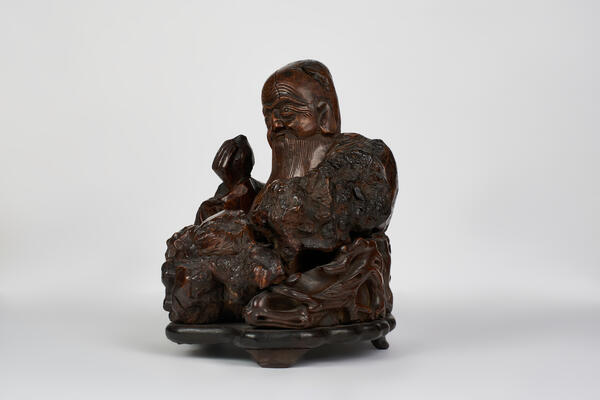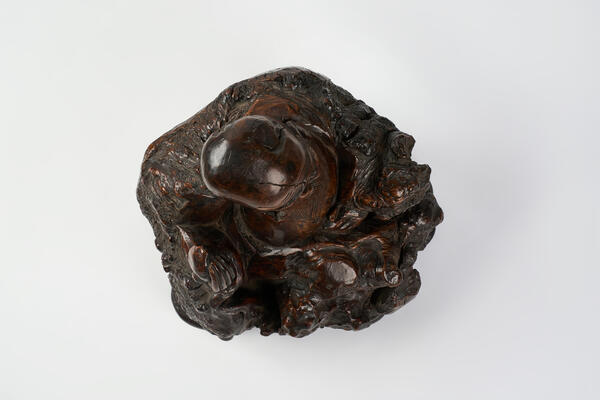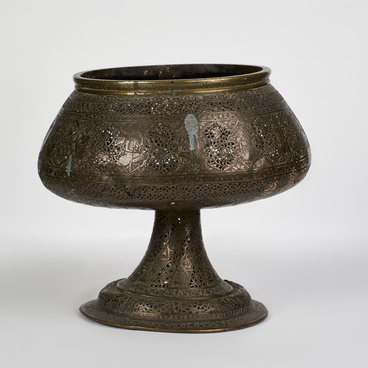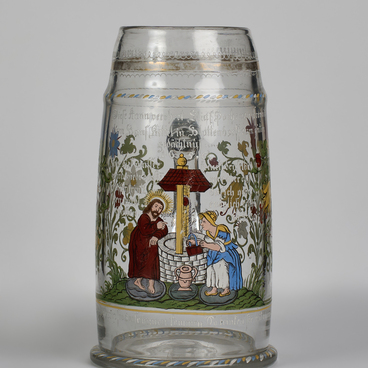This exhibit is an example of Chinese artistic woodcarving. It is a sculpture of the deity Shòu Xīng or the Old Man of the South Pole, who is represented as a venerable elder. His clothes are covered with carved patterns. His left hand is pressed to his chest (a gesture of openness, kindness and benevolence), and in his right hand, which is raised up, he holds a heart-shaped peach — a symbol of longevity.
The image of the mythological elder was extremely popular in China and Japan. The elder Shòu Xīng (“shòu” — longevity, “xīng” — star) is included in the mythological triad of deities. Their veneration goes back to the ancient astral cults, the deification of the three stars of the Big Dipper, embodied in three anthropomorphic characters. These are Shou, Fu and Lu. They are associated with the symbolic formula “Fu, Lu, Shou” (fortune, prosperity, longevity).
Shòu Xīng, as a rule, is displayed in the house in the company of two more elders — the god of happiness and the god of wealth. The Chinese believe that when combined, they represent three aspects of happiness. There are seven aspects of happiness in total, according to the number of stars of the Big Dipper. However, it is the three elders (the Shou, Fu and Lu stars) that personify “complete happiness”, consisting of a combination of wealth, fortune and longevity. This combination is beloved by many Chinese people.
Sometimes the Chinese deity can be portrayed as riding a deer or simply accompanied by this animal, which also symbolizes health and longevity. Shou is also depicted surrounded by children who carry the bright positive energy of life. A gourd vessel could be tied to Shou’s staff, in which medicinal products were stored. Therefore, such vessels were associated with health. The heart-shaped peach in Shou’s hands symbolizes longevity, enhancing the symbolism of Shou’s image. In general, any Chinese symbol of longevity can become an attribute of the Shou figurine: a crane, a pine tree, mushrooms and others.





